Indole-3-butyric acid
Synonym(s):4-(3-Indolyl)butanoic acid;4-(3-Indolyl)butyric acid;IBA
- CAS NO.:133-32-4
- Empirical Formula: C12H13NO2
- Molecular Weight: 203.24
- MDL number: MFCD00005664
- EINECS: 205-101-5
- SAFETY DATA SHEET (SDS)
- Update Date: 2025-01-27 09:38:02
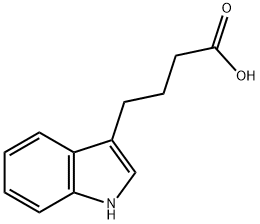
What is Indole-3-butyric acid?
Chemical properties
Indole-3-butyric acid (IBA) is a white to light yellow powder or crystalline solid with a slight characteristic odor. It is practically insoluble in chloroform, but is soluble in alcohol, ether and acetone. The solubility of IBA in water is 250 mg L-1 (EPA, 2010).
The Uses of Indole-3-butyric acid
Indole-3-butyric acid is auxin-family plant hormone (phytohormone). IBA is thought to be a precursor of indole-3-acetic acid (IAA) the most abundant and the basic auxin natively occurring and functioning in plants. IAA generates the majority of auxin effects in intact plants, and is the most potent native auxin. It is used to stimulate root formation of plant clippings. Suitable for plant cell culture tested.
What are the applications of Application
Indole-3-butyric Acid is a plant hormone in the auxin family.
Use Sites: Many food and feed crops; ornamental turf and nursery plants.
Application Methods: Applied to soil or plants as spray. Also used as a dip for cuttings.
Definition
ChEBI: Indole-3-butyric acid is a indol-3-yl carboxylic acid that is butanoic acid carrying a 1H-indol-3-yl substituent at position 1. It has a role as a plant hormone, a plant metabolite and an auxin. It derives from a butyric acid. It is a conjugate acid of an indole-3-butyrate.
General Description
Indole-3-butyric acid is a plant hormone in the auxin family and is widely used in agriculture since it induces rooting in various plants species such as mung bean (Vigna radiata?L.) cuttings.
Biochem/physiol Actions
Indole-3-butyric acid (IBA) is a naturally occurring phytohormone auxin (plant growth regulator). It promotes root formation in cuttings but does not affect ethylene levels. IBA might be a precursor for indole-3-acetic acid (IAA) through β oxidation pathway. IBA is present in plant species like Zea mays, Pisum sativum and Arabidopsis. IBA is more potent than IAA for inducing root formation.
Purification Methods
Recrystallise the acid from H2O. It is soluble in EtOH, Et2O and Me2CO but insoluble in CHCl3. [Bowman & Islip Chem Ind London 154 1971, Jackson & Manske J Am Chem Soc 52 5029 1930, Albaum & Kaiser Am J Bot 24 420 1937.] It has also been recrystallised from EtOH/water [James & Ware J Phys Chem 89 5450 1985]. Its UV has 278 and 320nm in isoPrOH [Elvidge Quart J Pharm Pharmacol 13 219 1940].max The methyl ester has m 73-74o (from *C6H6/pet ether) and b 230o/6mm [Bullock & Hand J Am Chem Soc 78 5854 1951]. [Beilstein 22 III/IV 1128, 22/3 V 140.]
Hazard
Indole-3-butyric acid promotes the growth and development of food crops and ornamentals when applied to soil, cuttings or leaves. Since this plant growth regulator is structurally similar to naturally occurring substances and is used in very small quantities, there are no known risks to humans or the environment. In addition, indole-3-butyric acid works at very low concentrations - usually several orders of magnitude below 1 per cent. Compared to most other insecticides, indole-3-butyric acid is applied at very low levels. In animals, indole-3-butyric acid is rapidly broken down into a harmless chemical closely related to that which occurs naturally in living organisms. In summary, this active ingredient is not toxic to humans or other mammals.
Properties of Indole-3-butyric acid
| Melting point: | 124-125.5 °C(lit.) |
| Boiling point: | 341.55°C (rough estimate) |
| Density | 1.1255 (rough estimate) |
| refractive index | 1.5440 (estimate) |
| storage temp. | 2-8°C |
| solubility | DMF: 25 mg/mL; DMSO: 25 mg/mL; Ethanol: 25 mg/mL; PBS (pH 7.2): 0.1 mg/mL |
| pka | 4.83±0.10(Predicted) |
| form | Liquid |
| color | Clear colorless to pale yellow |
| Water Solubility | Soluble in water(0.25g/L). |
| Sensitive | Air Sensitive |
| Merck | 14,4965 |
| BRN | 171120 |
| Stability: | Stable. Incompatible with strong oxidizing agents. Light sensitive. |
| CAS DataBase Reference | 133-32-4(CAS DataBase Reference) |
| EPA Substance Registry System | Indole-3-butyric acid (133-32-4) |
Safety information for Indole-3-butyric acid
| Signal word | Danger |
| Pictogram(s) |
 Skull and Crossbones Acute Toxicity GHS06 |
| GHS Hazard Statements |
H301:Acute toxicity,oral |
| Precautionary Statement Codes |
P264:Wash hands thoroughly after handling. P264:Wash skin thouroughly after handling. P270:Do not eat, drink or smoke when using this product. P301+P310:IF SWALLOWED: Immediately call a POISON CENTER or doctor/physician. P405:Store locked up. P501:Dispose of contents/container to..… |
Computed Descriptors for Indole-3-butyric acid
| InChIKey | JTEDVYBZBROSJT-UHFFFAOYSA-N |
Indole-3-butyric acid manufacturer
JSK Chemicals
Suryaprabha Pharmachem
ARRAKIS INDUSTRIES LLP
CEFA CILINAS BIOTICS PVT LTD
Chemoil Pharma
ASM Organics
New Products
1-Boc-4-cyanopiperidine tert-Butyl carbazate 1-(TERT-BUTOXYCARBONYL)-2-PYRROLIDINONE TETRABUTYLAMMONIUM CYANIDE TETRAHYDRO-2H-PYRAN-3-OL 3-Pyridineacrylic acid Nickel(II) perchlorate hexahydrate, 98% 4-Bromophenylacetonitrile, 95% 3-Bromo-4-fluoroaniline, 97% Sodium tetraborate decahydrate, 98% Palladium(II) acetate, trimer, Pd 99% 4-Bromo-2-chlorotoluene, 97% Tadalafil Clopidogrel bisulfate Sitagliptin Phosphate Monohydrate Cabergoline Fexofinadine HCl Etoricoxib 4-Amino Acetophenone 2-Chloro Acetophenone Amlodipine Base 2,3,5-Triiodobenzoic Acid Pyrrolidine Diiodo PentoxideRelated products of tetrahydrofuran

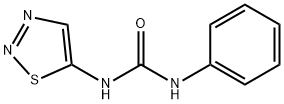

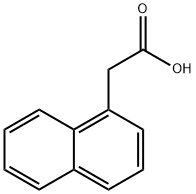

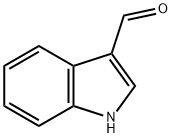
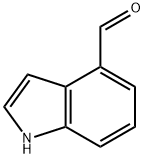
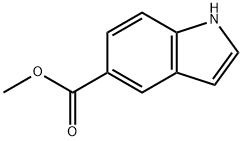
You may like
-
 Indole 3 Butyric Acid 98%View Details
Indole 3 Butyric Acid 98%View Details -
 Indole-3-Butyric Acid (SQ) CAS 133-32-4View Details
Indole-3-Butyric Acid (SQ) CAS 133-32-4View Details
133-32-4 -
 Indole-3-Butyric Acid (IBA) pure CAS 133-32-4View Details
Indole-3-Butyric Acid (IBA) pure CAS 133-32-4View Details
133-32-4 -
 Indole-3-Butyric Acid (IBA) for tissue culture CAS 133-32-4View Details
Indole-3-Butyric Acid (IBA) for tissue culture CAS 133-32-4View Details
133-32-4 -
 Indole-3-butyric acid CAS 133-32-4View Details
Indole-3-butyric acid CAS 133-32-4View Details
133-32-4 -
 3-Indolebutyric Acid CAS 133-32-4View Details
3-Indolebutyric Acid CAS 133-32-4View Details
133-32-4 -
 Indole-3-butyric acid 98% CAS 133-32-4View Details
Indole-3-butyric acid 98% CAS 133-32-4View Details
133-32-4 -
 Indole-3-butyric acid CAS 133-32-4View Details
Indole-3-butyric acid CAS 133-32-4View Details
133-32-4
